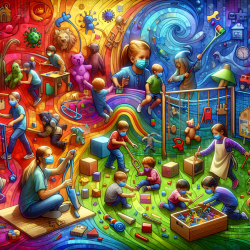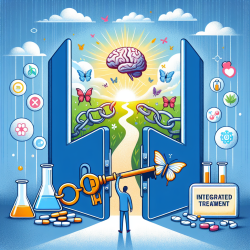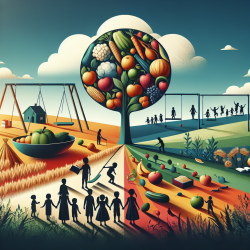Unlocking the Power of Loose Parts Play for Children's Development
In the wake of the COVID-19 pandemic, opportunities for children's play have been severely restricted, impacting their physical, social, and emotional development. However, a recent observational study conducted in Calgary, Canada, sheds light on a promising intervention that could revolutionize how we approach children's play and development. This study focused on "loose parts" play interventions in community parks, offering valuable insights for practitioners aiming to enhance children's developmental outcomes.
What is Loose Parts Play?
Loose parts play (LPP) involves providing children with a variety of materials—both synthetic and natural—that they can manipulate, explore, and use in creative ways. This type of unstructured play is self-directed, allowing children to engage in activities that promote physical activity, creativity, and cognitive development. The study observed children interacting with loose parts in community parks, highlighting the diverse play types and social interactions that emerged.
Key Findings from the Study
The study, conducted over two years, utilized systematic observation tools to capture data on children's physical activity, play types, and social interactions. Here are some key findings:
- Children engaged in various play types, with physical, exploratory, and expressive play being the most common.
- The play hubs encouraged moderate to vigorous physical activity, contributing to children's daily activity needs.
- Social interactions were predominantly positive, with children often playing in small groups and exhibiting cooperative behaviors.
- The availability of loose parts promoted inclusivity, allowing children with diverse preferences and abilities to engage in play.
Implications for Practitioners
For practitioners in speech language pathology and related fields, these findings offer a data-driven approach to enhancing children's developmental outcomes. By incorporating loose parts play into therapeutic settings, practitioners can foster an environment that supports physical, cognitive, and social development. Here are some practical steps to consider:
- Incorporate Loose Parts: Introduce a variety of materials that children can manipulate and explore. This could include natural elements like sticks and leaves, as well as manufactured items like sports equipment and building supplies.
- Facilitate Unstructured Play: Allow children the freedom to direct their play activities, encouraging creativity and self-expression.
- Promote Social Interaction: Create opportunities for children to engage with peers, fostering positive social skills and cooperative behaviors.
- Monitor and Adapt: Use systematic observation tools to assess the impact of loose parts play on children's development and adjust interventions as needed.
Encouraging Further Research
While this study provides valuable insights, further research is needed to explore the long-term effects of loose parts play on children's development. Practitioners are encouraged to conduct their own studies and share findings to contribute to the growing body of evidence supporting this intervention.
To read the original research paper, please follow this link: An Observational Study on Play and Physical Activity Associated with a Recreational Facility-Led Park-Based “Loose Parts” Play Intervention during the COVID-19 Pandemic.










